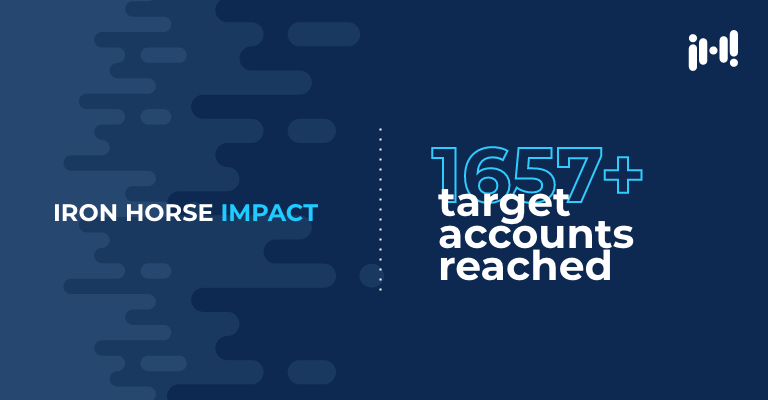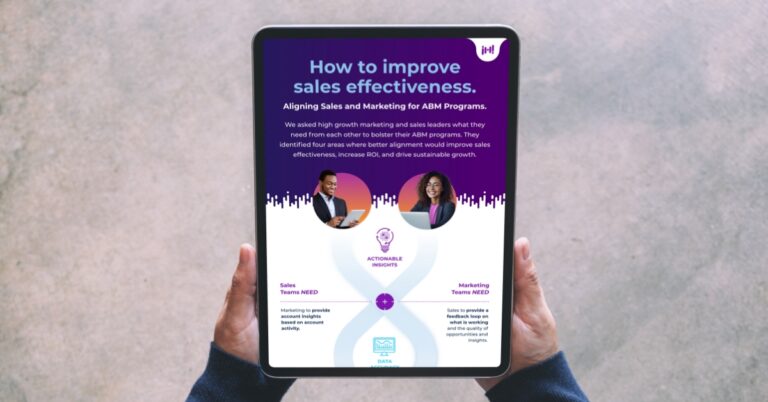In August, we hosted an Ask Marketers Anything Coffee Break where we asked registrants to submit their burning marketing questions and invited B2B marketing experts to come answer them.
Our audience was curious about topics ranging from AI to co-marketing to ABM. But one theme dominated: Demand Gen. Everyone wants to know about demand gen.
How to generate more demand. How to demand more generation. Fortunately, we’ve got answers (about generating demand. I don’t actually know how to demand generation.) Here are seven of them.
For our experts’ answers to questions on connecting with your audience, visit Part 1 of our 2023 Ask Marketers Anything Recap.
1. What are the most successful demand gen activities you’ve recently implemented?
We broke the ice on our 2023 Ask Marketers Anything Coffee Break with this question. Here’s what some of our experts had to say.
Well-crafted webinars.
Senior Global Demand Gen Manager Ottavio Dattolo from Drift started us off with his favorite: well-crafted webinars. Their aim is to produce content that a demand gen professional would genuinely want to consume. This involves stepping back and asking yourself the question, “What would truly engage me?” A key they’ve found to making their events successful is prioritizing education. That means a strict “no pitching” approach, ensuring that attendees genuinely learn from the sessions they attend, rather than feeling like they’ve wasted half an hour on content devoid of value.
Holistic omnichannel ABM campaigns
Director of Demand Generation Alex Barca’s recent experiences at Postal highlight the effectiveness of omnichannel Account Based Marketing (ABM) campaigns. Their success has come from reaching out across various platforms, including emails, ads, social media, and direct mail, focusing on a select group of 100-200 accounts over an extended period of time. The ultimate objective is to foster high-quality opportunities at the end of the campaign.
2. What’s a tactic that previously worked well for demand gen…but doesn’t anymore?
Chief Growth Officer Monica Behncke brings up two trends she hopes to see less of in 2024.
Excessive gating.
Everyone loves a good content gate…except audiences. When the ability to gate first emerged, there was a rush to gate almost everything. However, over time, we’ve recognized the pitfalls of this approach. Today, there’s a more refined strategy concerning what should be gated and what should remain accessible.
Giant product launch events.
Another notable shift involves large product launches. In the past, you’d see entire marketing efforts for an entire year culminating in one grand event. While these product launches themselves aren’t necessarily outdated, the approach to them has changed. With advancements, especially in the software sector, we see frequent layered, smaller releases.
The methodology has shifted towards product-led marketing and a more omnichannel strategy. These big launch events, once the epicenter of energy and momentum, have been adapted to better suit current buyer needs and the technology landscape.
3. What ABM campaigns are you seeing work well?
ABM fundamentally revolves around aligning sales and marketing. If this alignment is missing, the effectiveness of any ABM campaign will likely falter. The most successful campaigns Senior Director of Growth Marketing Maria Gianotti has observed involve significant engagement from the sales team, particularly when targeting accounts that are showing in-market intent.
Relying solely on email marketing nurtures and ad campaigns without sales involvement won’t yield the desired results. ABM’s essence is to launch highly tailored and personalized campaigns. The key to achieving this level of customization is for the sales team to conduct in-depth research on their target personas. This enables them to craft personalized outreach strategies to foster genuine connections with prospects.
4. What are some creative co-marketing projects you have done with partners?
Here’s what our partners from the AMA had to say about partner marketing.
Partner marketing all the way.
Tav Dattolo gave us a peek behind the curtain about Drift’s philosophy on co-marketing: Leverage it for (almost) everything. In fact, he estimates they involve partners in around 75% of their marketing activities, from developing ebooks to running joint social media campaigns to hosting shared events. Beyond sharing costs, they (and we) love partner marketing for the opportunity to amplify the message and diversify the narrative.
Outside-the-box ideas.
Hannah Swanson, Director of Marketing Engagement at Intentsify, advised marketers to think outside the box, and described a particularly creative example: Have you ever participated in a scavenger hunt? What about at a conference with Fortune 100 companies?
Hannah describes how she sent participants to collect tokens at each partner’s booth, speaking session, or other event spots. The objective was to gather as many tokens as possible throughout the conference, leading to tiered prizes like free trials or consulting sessions. The beauty of this approach was the sheer enthusiasm and engagement it generated among participants, even from major companies.
5. What are some examples of how content syndication works and can contribute to meetings and pipelines?
Content syndication, when used correctly within an integrated strategy, becomes an invaluable tool throughout the sales funnel. Hannah Swanson took us through the funnel.
At the top of the funnel, it effectively drives awareness while simultaneously helping you understand potential clients. It’s not unheard of to have a disparity between a company’s perceived client profile and those genuinely interested in their content. This discrepancy provides insights, helping companies realize if their content appeals to larger companies or possibly different industries.
As you move further down the funnel, content syndication serves as a mechanism for both evaluation and education tailored to specific personas. The success of content syndication often hinges on the opt-in process. An individual’s decision to opt-in indicates their interest, suggesting that after several touchpoints within an integrated marketing strategy, they might be ready to engage directly with the company.
Note: The backend processes are crucial. There needs to be a system in place to respond to these engagements, ensuring that it can indeed lead to meaningful conversations that move the lead further down the purchase journey.
6. How do you align your marketing strategies with your sales team’s goals?
Addressing marketing and sales alignment is a challenge many, if not most, companies face. Here are three pillars to work on:
Goals. It’s crucial for marketing and sales teams to share the same objectives, especially in an ABM approach. By sharing mutual goals, it becomes easier to establish effective workflows between the two departments to support the broader marketing strategies.
Metrics. Another crucial issue to address is any potential mismatch between metrics and data sources between the two departments. For example, instead of focusing solely on top-of-the-funnel metrics, companies should center their reporting on growth objectives like pipeline generation.
Terminology. Both teams should use uniform terminology. If there’s a difference in what they call certain metrics or processes, it’s bound to cause confusion. Face-to-face discussions, whether in-person or via video, are the most effective ways to ensure clarity and agreement on these aspects, rather than relying on emails.
7. What’s a creative gifting campaign you’ve seen executed well?
Alex Barca is no stranger to gifting campaigns. Here are a couple examples of gifting initiatives she’s been a part of at Postal:
The ABM picnic pack. During the summer, they sent “picnic packs” to high-intent prospects, which contained a blanket, wine opener, and an assortment of snacks. By sending the gift to individuals who’d already displayed significant interest, either by visiting their website or researching their competitors, they were able to accelerate their journey and drive impressive conversion rates.
Boom, roasted. For this campaign, they leveraged triggers within their CRM platform to automatically send out gifts when potential clients reached a specific stage in the buying journey. In this case, the gift was a coffee set they branded “Boom, roasted,” after a popular reference to the hit show The Office. The kit included branded mugs with a custom coffee bean roast. The campaign was well-received, generating considerable buzz on social media.
The handwritten note. This trigger campaign involved a unique gift to boost customer retention. Sixty days before a renewal, they automated the dispatch of a handwritten note from their CEO, emphasizing the customer’s value and inquiring about what they could do to retain their business. Often, it’s the personal touch that makes the difference.
The Iron Horse insight.
It’s clear that today’s demand generation landscape isn’t for the passive. Companies must be agile, adapting on the fly. It’s more than just launching campaigns—it’s about listening, analyzing, and responding. By truly understanding audience feedback and refining strategies in real-time, businesses can transform their engagement from fleeting to impactful.




